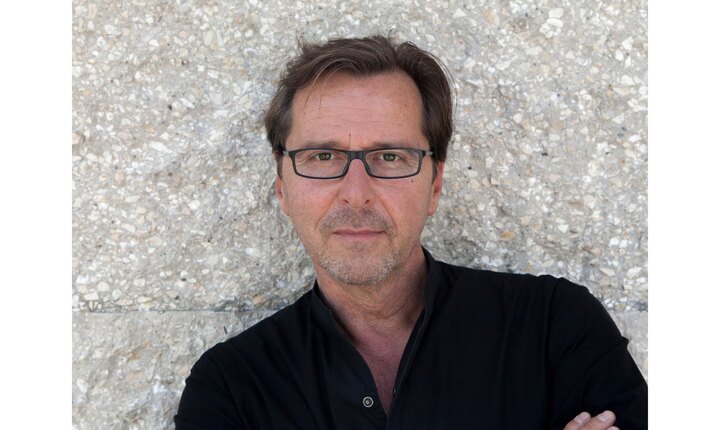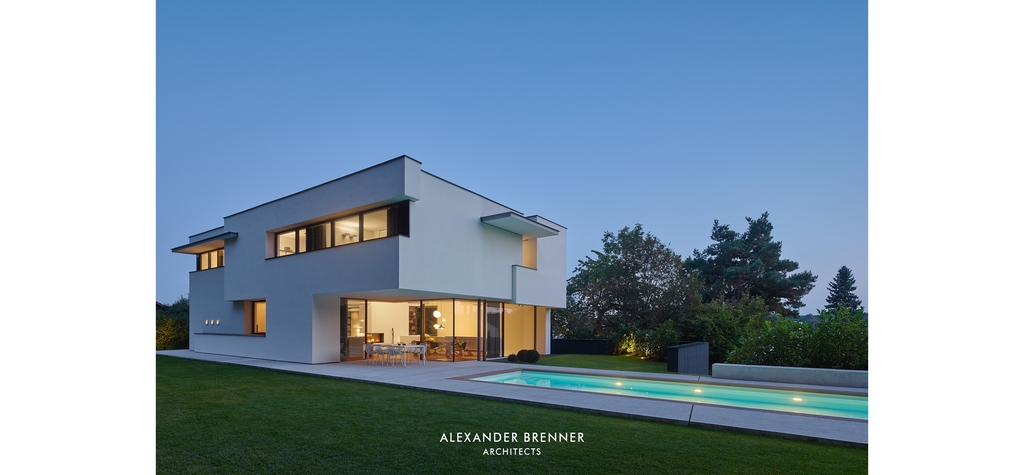
Snow-white in the green - "House am Wald”
The "Haus am Wald" from the studio of architect Alexander Brenner is a three-dimensional work of art. He has made a name for himself as a "master of modern villa architecture". Typical of Brenner's architecture, the snow-white "Haus am Wald" also combines aesthetics, craftsmanship and functionality. Right down to the last detail: TECE supplied an elegant metal flush plate.
New perspectives on old property
What architecture is capable of achieving becomes particularly clear on this site next to the nearby city forest: originally, an unsightly post-war building used to stand here. When Alexander Brenner was given the chance to redefine the site, he immediately saw the perspective opportunities of the hillside location.
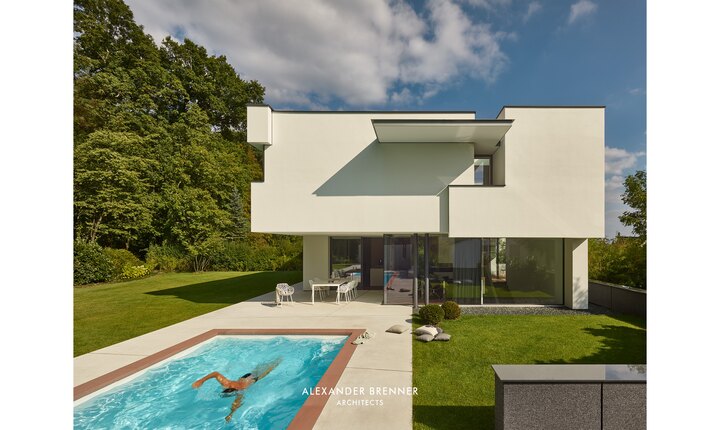
"We design all our buildings down to the last detail," emphasises the architect. His designs do not end at the building shell, but begin with the garden design and end with the lighting concept. The entire interior design, including the bathrooms, is also part of the process.
Panoramic vew and security
A special challenge with the Haus am Wald: combining a view and closeness to nature with privacy and security - two basic human needs that Brenner's architecture always aims to meet. The balancing act was successful: With its open, undefined scale, the white rectangular building refers to its surroundings. At the same time, a high proportion of closed areas provides protection from the eyes of the neighbours.
Light and gazes
In the entrance area, visitors are welcomed by an open space that extends over all three floors. Skylights direct sunlight into the interior of the house all year round. From the basement with the wardrobe, utility rooms and spa, a staircase leads to the ground floor. Here the air space flows directly into the dining and living area with open glazing. The wide view opens across the terrace to the west towards the garden and the forest. The upper floor offers retreats for the family of three: bedrooms, bathrooms and a workroom - with nature in view.
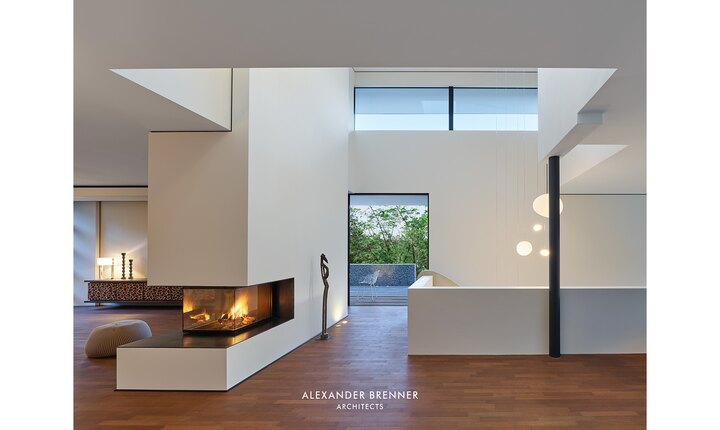
Residential house as a canvas for life
The interior design also bears Brenner's signature: with its clear surfaces, fitted fixtures and concealed technical elements, he creates the reduced backdrop that is typical for him. "A residential building must be like a canvas in front of which the lives of the residents can play," he explains his concept. "A calm, open and light background." This is particularly evident in the guest bathroom, where minimalism meets staging, aesthetics meet functionalism. Brenner sends users on an intergalactic journey between a wall of stars and porthole windows.
The icing on the cake is provided by lovingly combined details such as the graphically clearly defined TECEsquare Metal flush plate made of stainless steel in contrast to the filigree curved washbasin.
TECE: Design with flair
TECEsquare brings out the best in fine metal materials. You can literally feel the high-quality button mechanism of the flush plate in your fingertips. The fingers leave no marks on the specially coated surface.
Brenner emphasises: "We take into account the increased importance of the bathroom as a self-evident part of the living environment by designing this room very carefully for today's conditions, but also for those of the future."
TECE shares this conviction of the architect. When it comes to bathroom design, many builders are not only concerned with a contemporary look, but also with lasting value. About longevity based on aesthetic principles and durable materials. Technical solutions that fulfil both requirements are convincing with built-in sustainability.
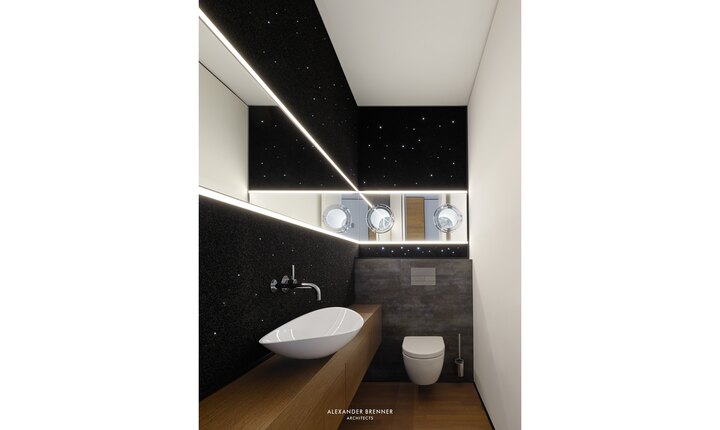
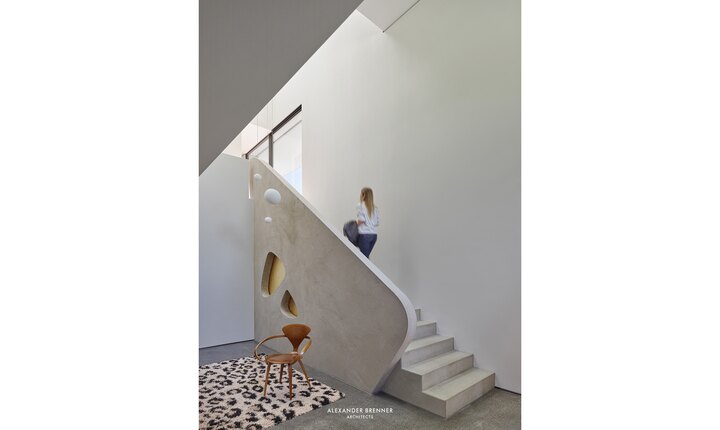
Michael Schuster, Key Account Manager Architecture at TECE: "When architects and clients opt for a holistic architectural approach, buildings are created with design substance down to the last detail. We appreciate such an attitude and support it with technical solutions that meet the highest design standards."
Concrete with charm
Brenner's preferred building material is porous concrete. In order to give the concrete a regional character, the architect also has the natural resources available on site mixed in, such as the dark shell limestone typical of Stuttgart. Worked with a hammer and chisel, the broken edges end up looking like natural stone and develop a special charm. This is visible in the "Haus am Wald" on the terrace of the fitness area.
Aesthetics and functionality together under one roof
Short value chains, the processing of durable, honest materials, craftsmanship from the region: for Alexander Brenner, these are all a matter of fact. Added to this are modern technology and energy efficiency: an air-source heat pump ensures the right temperature for well-being, while the necessary electricity is supplied by a large-scale photovoltaic system. Under one roof, aesthetics and functionality must go hand in hand to meet all requirements. From the bright entrance area to the detailed solution in the guest bathroom. In the Haus am Wald, this has been achieved once again.
Fotos: © Alexander Brenner Architects
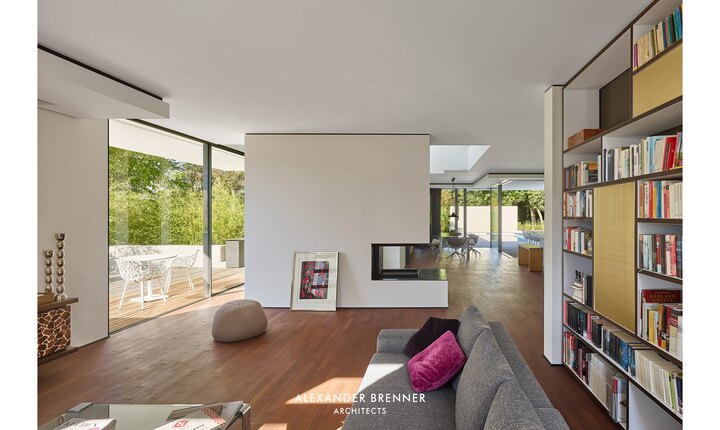
About Alexander Brenner
Alexander Brenner studied architecture and urban planning at the University of Stuttgart. After graduating "summa cum laude" in 1987, he initially worked as a specialist architect with Prof. Dr. Dieter Hauser. In 1990 he founded his own studio in Stuttgart. Parallel to his creative work, he has held numerous teaching positions over the past decades, including those at the universities in Stuttgart, Biberach and Nürtingen.
In 1994, he was appointed to the Association of German Architects (BDA). In 2009 and again in 2012, he was appointed to the Convention of the Federal Foundation for Building Culture.
His work quickly gained him international recognition and numerous awards. His "Haus am Oberen Berg" in Stuttgart was nominated for the Mies van der Rohe Prize in 2009. As a logical consequence, the Goethe-Institut has ranked him among Germany's top ten architects since 2016.
With his partners Benjamin Callies and Marcus Sauter, Alexander Brenner now heads a team of 20 in his Stuttgart studio.
